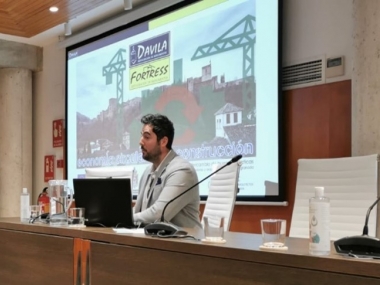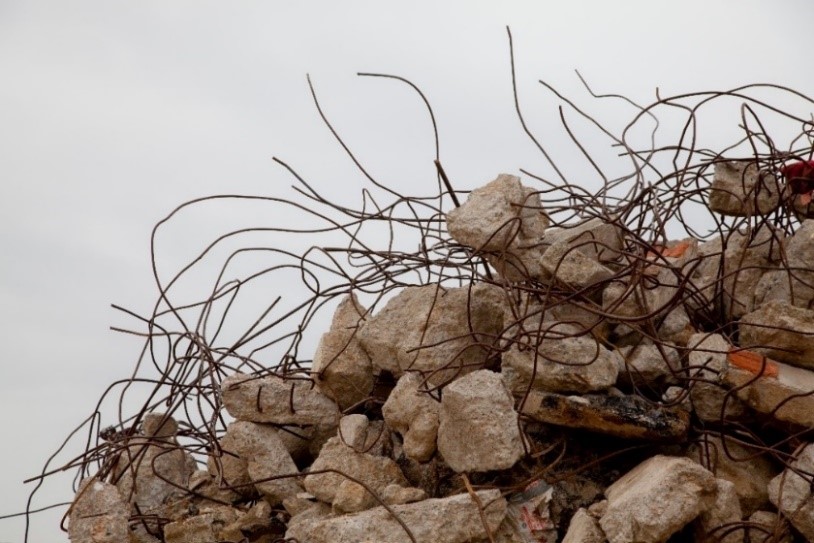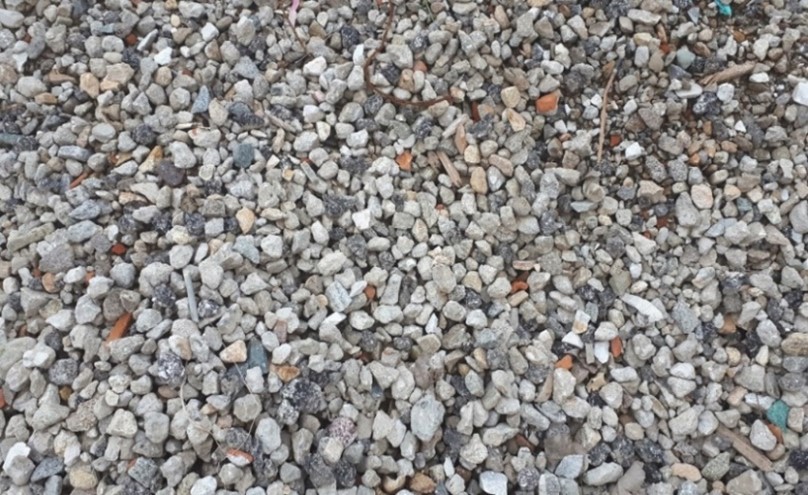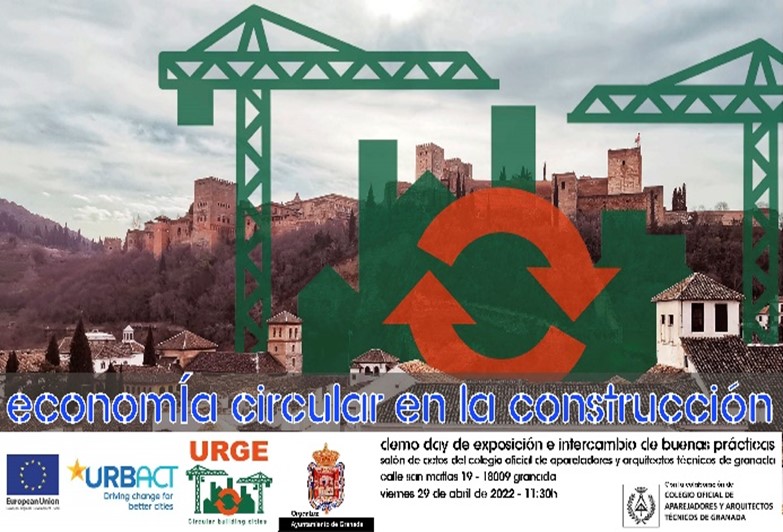Insights from the URGE network: thematic report
Edited on
21 May 2025Start small: The journey to scale. Experiences from the URGE: Circular Building Cities Network – part II.
By Dr. Eleni Feleki, Lead Expert of the URGE Action Planning Network

Introduction
In the frame of the URGE: Circular Building Cities Action Planning Network that is financed by URBACT III Programme, 9 partners have committed to design Integrated Action Plans (IAPs), following a participatory approach with local stakeholders and have them approved by City Councils. These partners have a common ambition, to put a stepping stone towards green transformation, through boosting circular economy practices, in the building sector.
How to succeed by daring to fail: A one of a kind example for the Greek reality from Kavala
Utilization of Secondary C&D material in public works’ procurements
One of the core thematic areas of URGE has been the ability to re-use materials that derive from construction or deconstruction projects, in a sense to upscale the materials, rather than downscale them. In Greece, the utilization of secondary materials in public construction works in the sense of upscaling is still far away, due to several factors, one of them being the national legislative framework. This gap is clearly spotted also in the “National Strategy for A Circular Economy” document, dated December 2018.

Figure 1: Historically preserved tobacco warehouses in Kavala (http://efimeridakavala.gr)
Why does this gap affect local authorities?
The role of local authorities as enablers of circular economy enhancement is well acknowledged by the OECD Report (2020). A powerful tool in the hands of local authorities in order to enhance circular economy has a name and a surname. It is called ‘’public procurements’’. But, the absence of clear guidelines and technical standards at national level, poses significant hurdles on local authorities when it comes to the design of tenders including circular economy criteria. Such criteria could be (significant and measurable) utilization of secondary materials in public constructions replacing virgin materials. The Municipality of Kavala is one of the partners of the URGE project and since the very early start of the project, they have developed a very ambitious and clear roadmap to deal with this gap and raise the local need, to the national level.
Building upon a strong legacy
The Municipality of Kavala has been partner in the ‘’Making Spend Matter’’ URBACT Transfer Network, thus the Municipality had already good knowledge of the power and impact of public procurements and an experience of working in a participatory and integrated approach with players from different levels of governance.

Figure 2: View over Kavala (Oystein Leonardsen)
The ‘’research’’ questions
Defining clear, concise, and focused research questions is an essential step in getting started with a project. In the case of Kavala, the research questions that would be addressed through the small-scale activity implementation, were developed as follows:
- What are the legal and/or institutional provisions hindering the utilization of C&D recycled materials in public procurements for construction projects?
- Under which prerequisites can quota for recycled C&D materials’ utilization be introduced in public (municipal) procurements for construction projects?
- How can green procurements lead to increased recycled C&D material utilization?
The relevance to the Integrated Action Plan (IAP)
Small-scale activities need to be in line with the actions that are included in the IAP, to provide some first insights about its feasibility, impact, potential drawbacks, so that risks are minimised during implementation. In this sense, the small-scale activity that has been designed in the case of Kavala is in line with the following aims of Kavala’s IAP:
- Preparation of the framework for boosting the market of secondary materials and resources through procurements
- Knowledge enhancement, communication for awareness-raising, sensibilization, training and education
The small-scale activity


Figure 3 and 4: Secondary raw materials (Eleni Feleki)
Key players, on board since the early beginning
In Kavala, the ULG is consisted of organizations and individuals with experience and a dynamic presence in the construction/ deconstruction sector. The ULG's goals were to allow participation, facilitate knowledge exchange and co-design the tendering document. Through ULG’s operation, the plan to implement the small-scale activity was agreed, the inputs needed were identified, the technical specifications of the tender were developed, and the tender has been finally prepared and brought into the attention of the Ministerial Committee for discussion. The entities that compose the ULG of Kavala reflect the integrated approach and address several governance levels, sectors, academia and citizens. They are depicted in the scheme below.

Figure 5: Local stakeholders in Kavala
Lessons learnt: the role of the market
Participation of private companies from the early stages of the project proved invaluable, as they provided the project team with expertise gained from their active involvement in numerous public and private construction projects. In addition, they indicated fields of improvement in the tendering regime and provided technical knowledge on materials that can have alternative uses and which otherwise would end up as informal backfilling materials.
Limitations and drawbacks
One of the main limitations that the project-team had to overcome was the lack of relevant legislative provisions and the minimal practical experience in similar projects at the national level. However, the participation of private waste management companies in the ULG in meetings from the early stages of the project proved to be very enlightening. Another limitation is the fact that the reuse of recovered C&D waste products in various construction projects is more expensive than simply using "virgin" materials. Thus, the process might look financially unattractive compared to “traditional” construction. It is important to accept and communicate, on a fair basis, that a rise in the construction project budget may be expected, at least before a streamlined process is installed.
Circular Granada
Construction in Granada -even though being one of the most important economic sectors of the city- is still mainly following the traditional linear model. Most of small and midscale works are often carried out by “old school” family companies, with no R&D Department. while training programmes on circular economy are missing. Professionals themselves, are also in need of circular economy training, since there is a gap in the education on this topic, both in Universities and in professional associations.
During the lifetime of the URGE project, several good practices were detected among all actors involved in local constructions. The idea of showcasing them in a way which could also serve as a small-scale activity, gave to birth the “URGE DemoDay”: the first meeting ever held in Granada related to circular economy in construction.



Figure 6, 7 and 8: URGE DemoDay in Granada (City of Granada)
The results
Start small to think big later: The long-lasting effect
Testimonies by small-scale activities’ key persons
 “It was major assistance and groundbreaking experience of us taking part in URGE project. In particular, the methodology of the URBACT programme helped us to see circular economy in the construction sector in an integrated approach, attract and engage stakeholders, dedicated to the cause and provided us with essential tools for the development of the Integrated action plan. For the city of Kavala, URGE has been an amazing source of knowledge and know-how for the transition to the circular economy. We shared our anxieties and experience in tested solutions presented by our partner cities and got professional guidance from our Lead and ad hoc experts resulting in a consistent and feasible integrated action plan. Implementation of the small-scale activity gave us and was the first attempt at a national level to include recycled material in a public tender—a small step, significant progress, however. In a country, we lack a legislative framework in the field. We are experiencing more obstacles than expected and the market is not ready to support the change yet. Thus, we tried it out and elaborated an action plan towards mainstreaming circularity. We consider ourselves lucky to have our stakeholders engaged and our policymakers supportive!” Io Chatzivaryti, Senior Advisor to the Mayor in EU projects, Municipality of Kavala, URBACT Local Group Coordinator
“It was major assistance and groundbreaking experience of us taking part in URGE project. In particular, the methodology of the URBACT programme helped us to see circular economy in the construction sector in an integrated approach, attract and engage stakeholders, dedicated to the cause and provided us with essential tools for the development of the Integrated action plan. For the city of Kavala, URGE has been an amazing source of knowledge and know-how for the transition to the circular economy. We shared our anxieties and experience in tested solutions presented by our partner cities and got professional guidance from our Lead and ad hoc experts resulting in a consistent and feasible integrated action plan. Implementation of the small-scale activity gave us and was the first attempt at a national level to include recycled material in a public tender—a small step, significant progress, however. In a country, we lack a legislative framework in the field. We are experiencing more obstacles than expected and the market is not ready to support the change yet. Thus, we tried it out and elaborated an action plan towards mainstreaming circularity. We consider ourselves lucky to have our stakeholders engaged and our policymakers supportive!” Io Chatzivaryti, Senior Advisor to the Mayor in EU projects, Municipality of Kavala, URBACT Local Group Coordinator

“URBACT methodology has been crucial for us to detect and prioritize our needs, and to get the best inspiration from the exchanges with other cities. Furthermore, getting all construction agents together as stakeholders is the most solid foundation we could achieve to set circular economy criteria in the sector, through our Integrated Action Plan. Our small-scale activity (first ever meeting in our city related to CE in construction) gave us the opportunity to check and foresee the kind of actions that we can hold in future to raise awareness and training, and to strengthen the bonds between all stakeholders: government, professionals, University and companies.” Ángel Luis Benito Pérez, Architect of Municipality of Granada and URBACT Local Group Coordinator
Further resources concerning the cases of Kavala and Granada
Granada: City video Granada: Circular building cities - YouTube
Kavala: City video Kavala: Circular building cities - YouTube
Acknowledgments
This article has been produced in the frame of the URGE APN, financed by the URBACT Programme. Special acknowledgments for the production of this article deserve to Io Chatzivaryti and Ángel Luis Benito Pérez.
Submitted by Anonymous on
